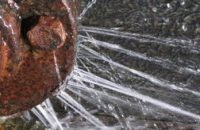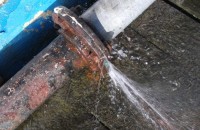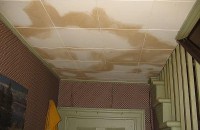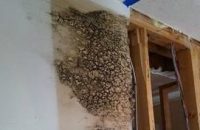Learn How To Properly Detect Leaks In Your Home
Leaks always seem to occur at the most inopportune time, not that there is ever a good time for water to invade your property, but when it does, there are specific ways to deal with the issue effectively.
By catching a leak early you can stop major water damage from affecting your property, not to mention the mold that the increased moisture has the ability to cause.
We all know that home maintenance can be a hassle, but if you take the time now to fix small issues around the house, you can easily prevent major incidents in the future. By being educated on the different ways you can detect a leak before it gets out of hand, you can save yourself from a a headache, and an empty bank account later on down the line.
How To Find A Leak In Your Home
If you can locate your water meter then you can monitor all the water that is coming and going from your home. You can use the meter to figure out if there is a leak on your water line by shutting off the water valve going into the house and checking to see if meter is still running. Even a very small leak will show up on the meter by using this method.
Your hot water tank could be the cause of a leak. It may be connected to a drain and by checking it’s pressure relief valve by removing the drain pipe you will be able to hear water hissing that can indicate a leak.
The toilet is another major source of leakage. You can remove the top of the tank and listening for a hissing sound. If you don’t hear anything, then you can do the food coloring test. By adding a couple drops of food coloring to the tank you can see if the color becomes apparent in the bowl, which will tell you that you have a leak in the flapper.
If your leak is not inside the home, then it may be coming from a leaky hose bib. You can listen to the hose bib to check for any sound that may be coming from the device.
You can actually use a screwdriver to act as a stethoscope by putting the tip on the metal part of the hose bib and the other end to your ear. If there is any sound at all it could mean that a leak is present. You can use this same screwdriver stethoscope method on the various faucets in the household to listen if they may be the cause of your home’s leak issues.
Understanding The Types Of Water Damage A Leak Can Cause
Leaks, big or small, can cause many different water damage issues on both the interior and exterior of your home. For one, they can cause structural damage to your property, especially if the leak has gone unnoticed for a significant amount of time.
The moisture can damage the interior of the wall and it’s joists, which can eventually weaken the structure. The leakage can also cause wood to rot, which can eventually lead to you needing a partial or full replacement of the drywall of the affected section.
When water damage is left to sit on any surface for an extended period of time it can cause mold to grow, which can eventually lead to an infestation if it is not mitigated quickly. Mold can grow within 24 hours when the conditions are right, so it is important to get water damage removed as soon as it is discovered.
Due to the water damage and mold leaks can cause in your household, they need to be addressed quickly and repaired properly. If you are unsure if you can fix a leak on your own, it is best to reach out to a professional that has all the gear needed to get the job done correctly.








Leave a Reply